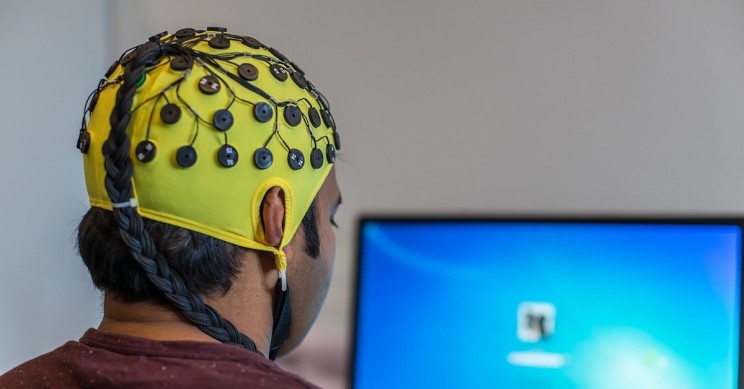
BrainNet: Brain-to-Brain Direct Communication Developed by Scientists
We all once thought or made the effort to communicate telepathically with our friends, not an easy task, since we are still discovering how the human brain works and its different qualities. This time, scientists have discovered the way to connect our brains, marking a milestone in this matter in recent times. The study published recently in Scientific Reports tells us how these collaborative brain sequences are possible with the use of transcranial magnetic stimulation (TMS) and electroencephalography (EEGs). What is BrainNet? According to the researchers who conducted the study at the University of Washington, BrainNet is "the first multi-person non-invasive direct brain-to-brain interface for collaborative problem-solving". Rajesh PN Rao, Director of the NSF Center for Neurotechnology and Cherng Jia and Elizabeth Yun Hwang, professors of Computer Science and Engineering and Electrical Engineering and Computer respectively, from the University of Washington in Seattle, aimed to see how humans can cooperate using only the brain. "Humans are social beings that seek to solve problems with each other through communication, which we could not do alone", Rao said. "The idea was to know if this type of cooperation could be possible using a form of brain communication between two or more individuals", he concluded. How does it work? The main study had three participants connected to a combined interface consisting of:
In this case, two individuals were classified as "transmitters" and a third as "receiver". The investigation was carried out through a game like the famous and classic Tetris in which, the transmitters could see the interface of the game, but not the receiver. The latter had to play and solve the game based on the communication the transmitters sent. The EEG reads the brain activity of the transmitters and sends the signals over the Internet using TMS. Solving the test To begin, the transmitters must concentrate on a high-frequency light source if the block or figure that moves on the screen needs to be rotated to fit in the right place. On the other hand, if the block or figure did not need to be rotated, the transmitters would concentrate on a low-frequency light source. The result The receiver was able to perceive in what kind of light source the transmitters were concentrated. The receiver was able to turn the block in 13 of 16 attempts. This means that the communication was successful 80 percent of the time. In another subsequent test, noise was added to hinder the process, but both the transmitters and the receiver easily adapted. The brain-to-brain communication device Andrea Stocco, co-director of the Cognition and Cortical Dynamics Laboratory and Assistant Professor at the Institute for Learning and Brain Sciences (I-LABS) and Department of Psychology, explains: "To transmit the message to the receiver, a cable with a miniature racket termination is used and placed on the back of the receiver's head. Using this cable, we can simulate the part of the brain that translates the signals sent from the eyes". Stocco added that "with this, it is possible to deceive the neurons that are located in the back of the brain to interpret and transmit the message that they apparently received from the eyes. Then, the participants had sensations of seeing bright arcs or other types of figures that appeared in front of their eyes, similar to when you receive some kind of luminescent stimulus or compared to a result of a clash of heads in a football game". You might have seen this mentioned in the movie Concussion, who tells the story of a doctor who shed light about the risks of brain damages on the athletes in the ranks of NFL football. Summing up We know that we are taking the first steps in this regard. Developing this type of technology is not easy and requires a lot of research. At the same time, security contributions are required in the transmission of information since we do not always think as we speak, and it is possible that some information will be disclosed without wanting to do so. On the other hand, it certainly marks a breakthrough in this type of research for the future. The first steps were already taken.
 COMMENTS:
|
